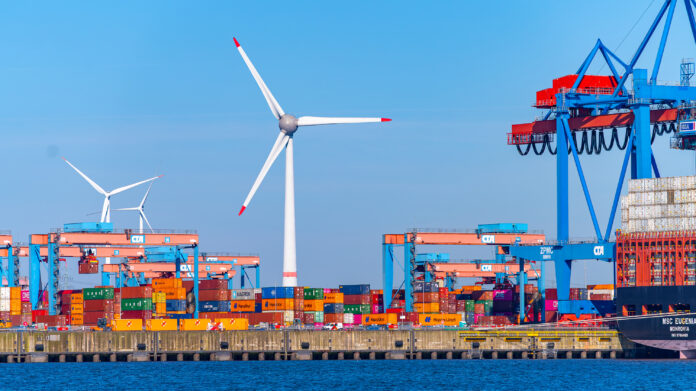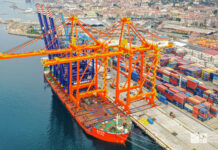
![]()
The Port of Hamburg handled 2 million TEUs in the first three months of the year, representing a 6.3% growth year-on-year. For the same period, the German port recorded seaborne cargo throughput of 28.3 million tonnes, translating to a 3.1% year-on-year increase.
Hamburg is, therefore, the only one of the three largest European ports (Rotterdam, Antwerp-Bruges, and Hamburg) with a positive trend in seaborne cargo throughput.
The strong traffic with the Far East countries, which also led to an increase in container throughput, contributed significantly to this. The new liner services with the growth market of India also had a positive impact. At a total of 60,000 TEUs, container throughput grew by 39.6%. Only Malaysia, with an increase of 50.6% to 54,000 TEUs, showed stronger growth.
Furthermore, there were signs of a recovery in throughput with China, which is the largest trading partner of the German port. At 597,000 TEUs, this represented an increase of 11.3%. By contrast, trade with the United States showed the first effects of the Trump administration’s measures, falling by 19% to 145,000 TEUs.
The Port of Hamburg also saw an upward trend in conventional general cargo with an increase of 3.5% to 280,00
From January to March 2025, throughput of bulk goods remained stable overall at 8.1 million tonnes (-0.8%), throughput of grabbable cargo declined by 5.8% due to lower demand as a result of the energy transition, coal and ores correspondingly saw lower rail transport volumes, with 10.9 million tonnes (-5.7%) loaded onto the railways. Moreover, the throughput of suction cargo fell by 14.3%, while liquid cargo performed very well with an increase of 23.6%.
While transhipment traffic in particular has suffered from the geopolitical conditions, it has shown an upward throughput result at the beginning of 2025, with the port reporting an increase of 15.3% to 723,000 TEUs during the first quarter.
“The reasons for this are the addition of new liner services, from which volumes are transported onwards by feeder ship, and the possible acquisition of transhipment volumes as part of the restructuring of the shipping company alliances,” said a port representative.
Meanwhile, hinterland traffic increased to 1.3 million TEUs (+1.8 percent). In turn, this benefited the railways, which transported 645,000 TEUs (+0.7 percent), according to preliminary figures.





